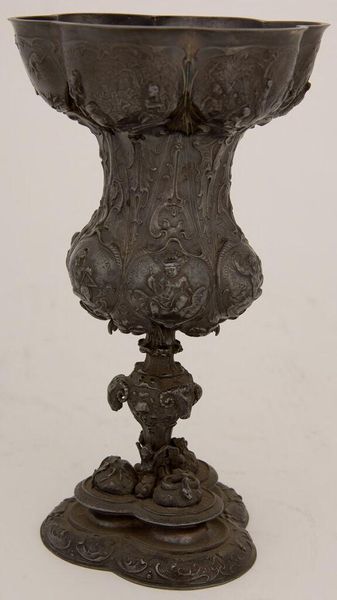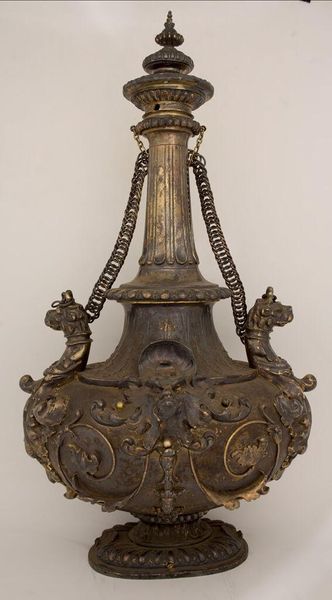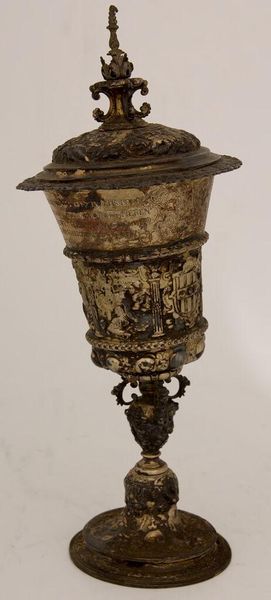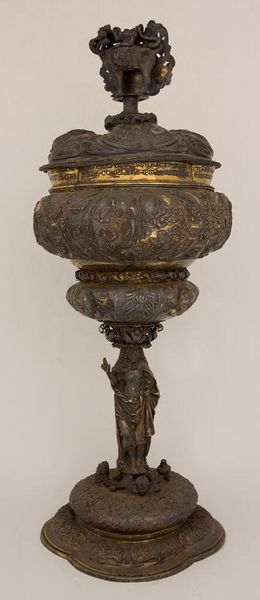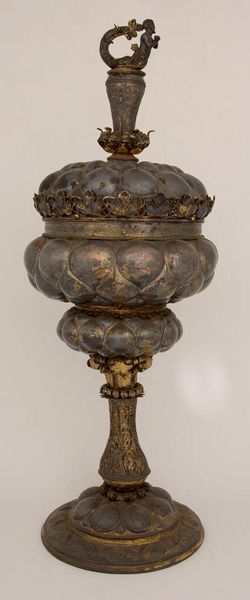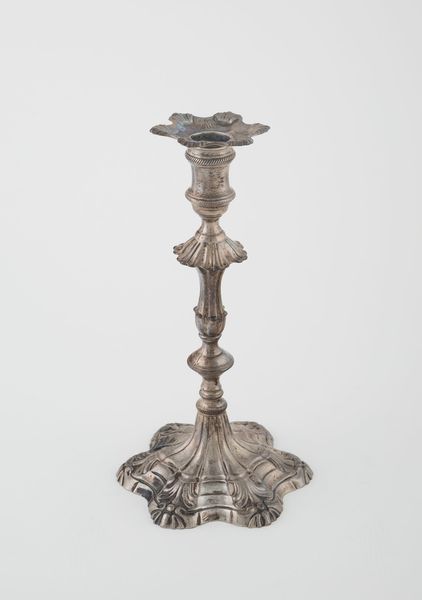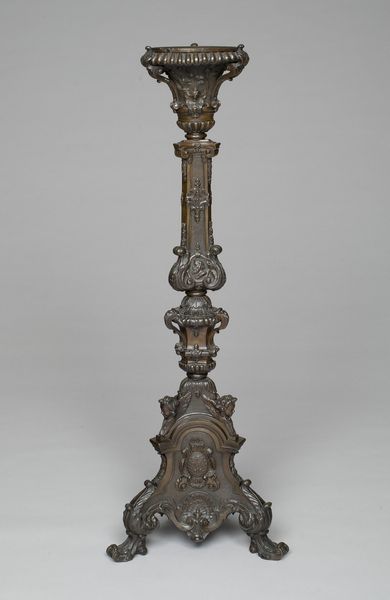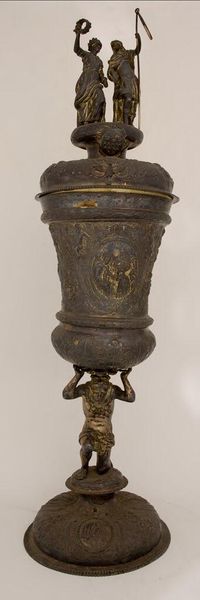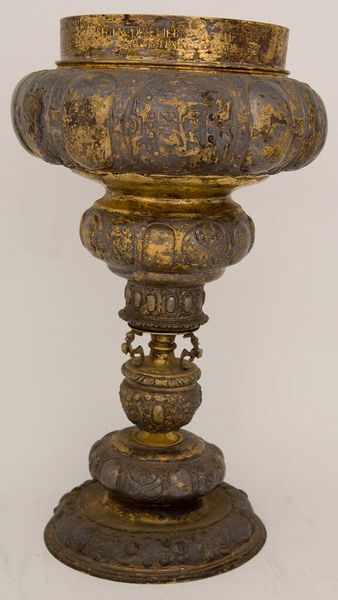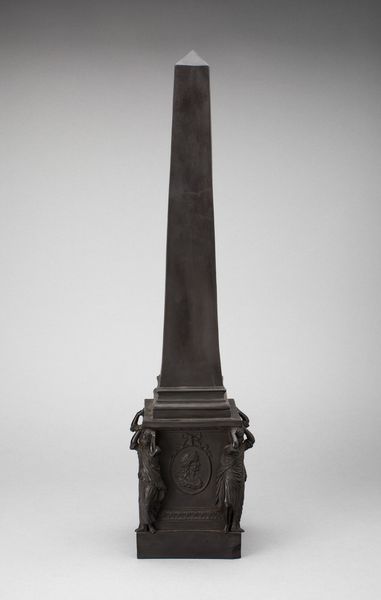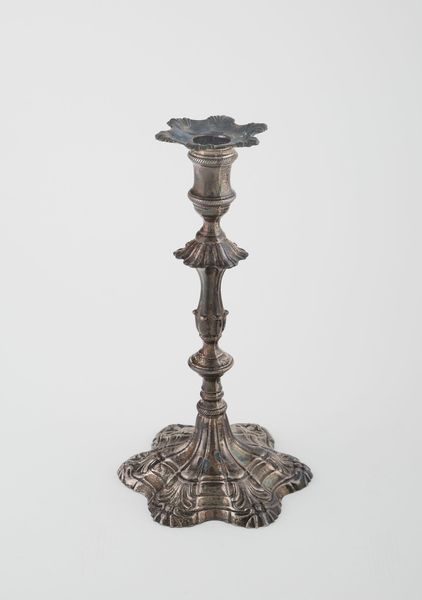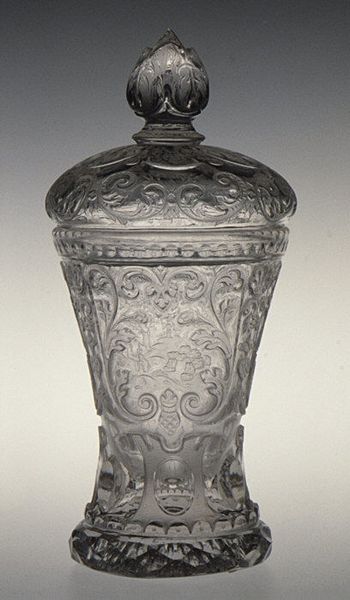
Facsimile of Aquileja Cup (Nuremberg School, early 17th century) c. 1900
0:00
0:00
Dimensions: sight: 19.7 cm (7 3/4 in.)
Copyright: CC0 1.0
Curator: This is a fascinating object: a facsimile of an Aquileja Cup, crafted in the Nuremberg School style during the early 17th century. Editor: It has such a solemn aura. The dark metal, the intricate yet almost severe ornamentation... It feels like a relic from a secret ritual. Curator: Nuremberg was a hub for metalwork. These cups were luxury objects, reflecting wealth and status. I wonder about the social dynamics inherent in displaying such a piece. Who had access to it, and what did it signify in terms of power? Editor: The meticulous labor involved in its creation is also significant. Someone dedicated countless hours to shaping and engraving this. What was their place in the hierarchy? Were they recognized for their skill, or merely another cog in the wheel of production? Curator: And the "facsimile" aspect is intriguing. What does it mean to copy something so valuable? It prompts questions about authenticity, access, and the very definition of art versus craft. Editor: The materiality speaks volumes about the society it came from. Thinking about the raw materials, the tools required, and the resources consumed offers a glimpse into the values of that era. Curator: Indeed, and by considering the cup's potential use—its function, perhaps in ceremonies or celebrations—we can start to unravel the social and political contexts of the time. Editor: It is a potent reminder that even seemingly decorative objects can reveal so much about the lives of those who made and used them.
Comments
No comments
Be the first to comment and join the conversation on the ultimate creative platform.
